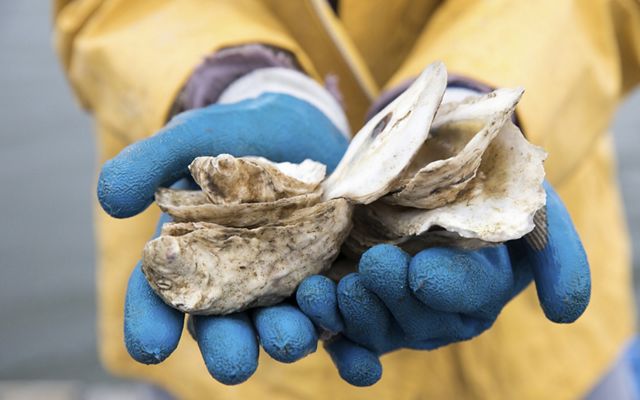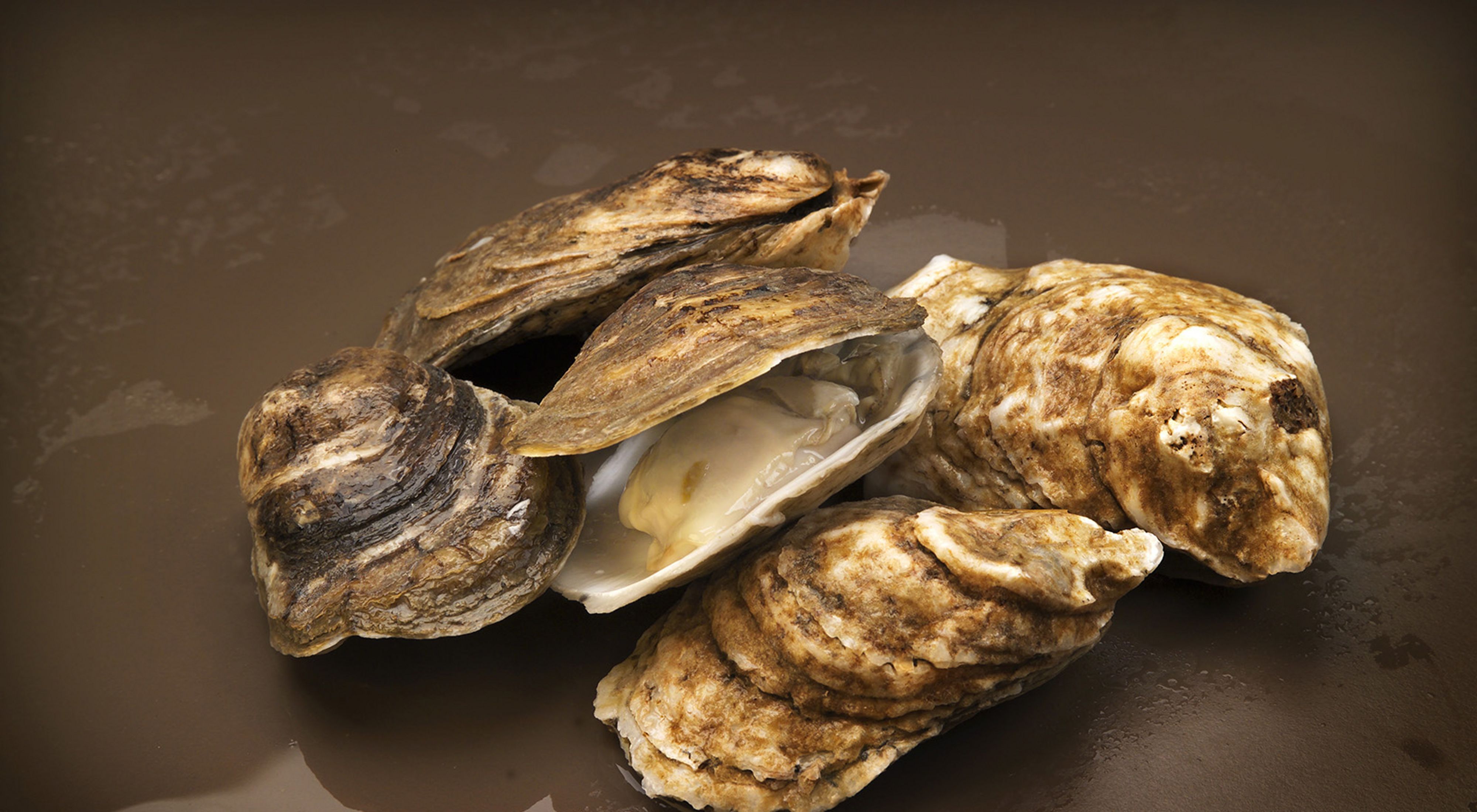Restoring North Carolina's Oysters
Clustered oysters can provide homes for up to 300 species of plants and animals.
A Dramatic History
Oysters were once plentiful in North Carolina's waters. Native Americans relied on them for food, and they played a significant role in the colonial economy. Coastal Carolinians traded bushels of oysters for other supplies.
They became an even bigger commodity after the Civil War. Oysters that had once been bartered for supplies were sold for cash in a marked that craved plump East Coast oysters. Oyster houses were built along the coast and large canneries supplied northeastern markets with North Carolina oysters.
A struggle sprang up between the folks who harvested in shallow waters with tongs, who were largely North Carolinians, and the folks who harvested in deeper waters with motorized dredges, who often came from out-of-state. Thus began the Oyster War of 1891, where armed North Carolinians, supported by their legislature and governor, threatened to shoot out-of-state dredgers.

Problems with Overharvesting
The war on oysters began in the next century. Unsustainable harvesting depleted oyster beds and onshore development while timbering and agricultural uses degraded habitat.
In 1987, a new problem hit in the form of a parasitic disease. Although Dermo doesn’t affect humans, it wiped out large numbers of oysters.
The loss of oysters to disease, overharvesting, and habitat degradation includes the loss of the many benefits they bring to North Carolina's coastal waters:
- Oyster reefs act as habitat for juvenile commercial fish, forage fish, and other marine life like blue crab, shrimp, and rockfish.
- Oysters are incredible filter feeders. They eat by pumping large volumes of water through their body. They remove algae and nutrients, making the water clearer and cleaner for seagrasses and other marine life. An adult oyster filters up to 50 gallons of water each day.
- The tens of thousands of oyster shells that make the foundation of oyster reefs also form natural barriers that lessen wave action and reduce erosion.
The return of healthy reefs
The Nature Conservancy is working hard toward the return of healthy oysters reefs along North Carolina’s shoreline. We began our oyster reef restoration work in North Carolina in 2002 by creating an oyster shell recycling program with local business and using those shells to create offshore reefs.
Today, that work continues with volunteers. They help us bag shells, which are then placed in the water to attract young oysters, called spats. We are also using a kind of rock called marl as the basis for new oyster reefs.
We have built over 3,000 linear feet of oyster reef and 50 acres of deep water oyster sanctuaries off Alligator River National Wildlife Refuge, Swan Quarter National Wildlife Refuge, and our own Nags Head Woods Preserve.



